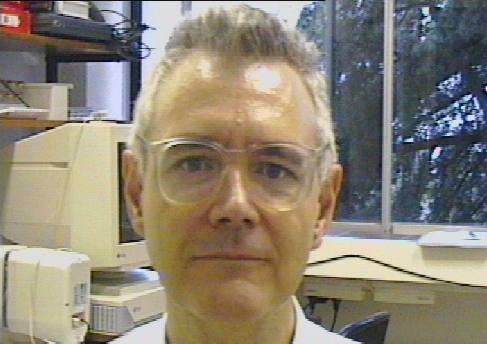
"Now this has the form of a myth, but really signifies a declination of the bodies moving in the heavens around the earth, and a great conflagration of things upon the earth, which recurs after long intervals...." -- Plato, philosopher,
Timaeus, 360 B.C.
"... the Egyptians ... concealed mysteries that were above the common herd under a veil of religious rites and hieroglyphic symbols." -- Isaac Newton, mathematician,
Principia, 1694
"Le myth est né de la science [Myth is born from science]." -- Charles F. Dupuis, polymath,
1795"Le mythologie, dans son origine, est l'ouvrage de la science [Mythology has it's origin in the opera of science]..." -- Charles F. Dupuis, polymath,
1795"Tis strange -- but true; for truth is always strange; stranger than fiction." -- Lord Byron, poet, Don Juan, Canto XIV, Dec 17th 1823
"Mythology is inevitable, it is natural, it is an inherent necessity of language." -- F. Max Muller, philologist, On the Philosophy of Mythology, 1872
"Depend upon it, there is mythology now as there was in the time of Homer, only we do not perceive it, because we ourselves live in the very shadow of it, and because we all shrink from the full meridian light of truth." -- F. Max Muller, philologist, On the Philosophy of Mythology, 1872
"... the only explanation possible is that the legends must be true." -- John H. Parker, archaeologist, The Archaeology of Rome, 1877
"We all believe in fairy-tales, and live in them." -- G. K. Chesterton, philosopher, Heretics, Chapter XX: Concluding Remarks About Orthodoxy, 1905
"... what is myth to-day is often history to-morrow." -- Lewis Spence, translator, July 1908
"I would always trust the old wives' fables against the old maids facts." -- G. K. Chesterton, philosopher, Orthodoxy, Chapter IV: The Ethics of Elfland, 1909
"My first and last philosophy, that which I believe in with unbroken certainty, I learnt in the nursery. ... The things I believed most then, the things I believe most now, are the things called fairy tales. They seem to be the entirely reasonable things. They are not fantasies: compared with them other things that are fantastic. ... Fairyland is nothing but the sunny country of common sense." -- G. K. Chesterton, philosopher, Orthodoxy, Chapter IV: The Ethics of Elfland, 1909
"... If I am to discuss what is wrong, one of the first things that are wrong is this: the deep and silent modern assumption that past things have become impossible." -- G. K. Chesterton, philosopher, What's Wrong With The World, Chapter IV: The Fear of the Past, 1910
"... at the basis of all myths, particularly nature myths, there is a real fact, but during a subsequent period the material was given its present mythical character and form." -- Johannes Riem, author, 1925
"This they tell, and whether it happened or not I do not know; but if you think about it, you can see that it is true." -- Black Elk, medicine man, August 1930
"Facts are facts, and the Cult's so-called mythology has certain facts behind it." -- Isaac Asimov, author, 1941
"The geomythologist seeks to find the real geological event underlying a myth or legend to which it has given rise; thus he helps convert mythology back into history." -- Dorothy B. Vitaliano, geomythologist, May 1967/June 1968
"The heart of Christianity is a myth which is also a fact." -- C.S. Lewis, author, 1977
"By becoming fact it does not cease to be myth...." -- C.S. Lewis, author, 1977
"... all the talk, all the legends, must be true." -- Paige W. Christiansen, historian, The Story of Mining in New Mexico, 1975
"Many myths contain accurate or reasonable statements about past events, while all historical sources, both primary and secondary, originate in a given cultural milieu and are influenced by cultural practices and beliefs. Because of this, it can be said that all historical accounts, whether Aztec, European, Chinese, or Fijian, are to some extent 'myths' (see Sahlins 1983)." -- Michael E. Smith, historian, 1984
"Then the legends must be true." -- Steve Kramer, writer, Exedore, Zentraedi Minister of Affairs, Robotech: The Macross Saga, Episode 23: Reckless, April 3rd 1985
"... the word 'myth' does not necessarily carry a connotation of falsehood...." -- Manuel Alfonseca, computer scientist, July 1998
"Year after year, science finds explanations, scientific reasons behind all the legends. They think this proves history was not as myth has shown it, but in fact it proves that all the myths were true." -- Robert Brown, writer, 2005
"... the study of the geological foundation of human myths, an emerging discipline in the Earth sciences called 'geomythology.' This term was coined by Dorothy Vitaliano, in her pioneering book Legends of the Earth: Their Geological Origins (1973), as 'the study of the geological reality lying behind myths and legends of the past." -- Luigi Piccardi, geomythologist, Myth and Geology, 2007
"Geomythology indicates every case in which the origin of myths and legends can be shown to contain references to geological phenomena and aspects, in a broad sense including astronomical ones (comets, eclipses, meteor impacts, etc.)." -- Luigi Piccardi, geomythologist, Myth and Geology, 2007
"The interpretation of geological folklore, to be correctly and exhaustively carried out, requires the integration of knowledge in the fields of geology, archaeology, history, comparative mythology and anthropology. The geological study of mythology and legendary accounts may reveal encoded memories of past geological events, thus providing a reservoir of geological information." -- Luigi Piccardi, geomythologist, Myth and Geology, 2007
"Myth and geology are related in several ways." -- Dorothy B. Vitaliano, geomythologist, 2007
"Some geomyths actually constitute a record of major geological events." -- Dorothy B. Vitaliano, geomythologist, 2007
"In all the Indian legends, whether it is the Ramayana or Mahabharata, one can find embedded elements of geological processes." -- D. Chandrasekharam, geomythologist, 2007
"Myths have no point to make. They are, in fact, history." -- Jno Cook, author, November 2009
"There is no difference between science and mythology." -- Me, noob, March 2010
"Ancient myths proved science wrong." -- Me, noob, March 14th 2010
Vitaliano, D.B.,
Geomythology: The Impact of Geologic Events on History and Legend with Special Reference to Atlantis, Journal of the Folklore Institute, Volume 5, Number 1, Pages 5-30, Jun 1968
Piccardi, L., and Masse, W.B.,
Myth and Geology, Geological Society Special Publication 273, 2007
Vitaliano, D.B.,
Geomythology: Geological Origins of Myths and Legends, Geological Society of London Special Publications, Volume 273, Pages 1-7, 2007
Chandrasekharam, D.,
Geo-Mythology of India, Geological Society of London Special Publications, Volume 273, Pages 29-37, 2007
Piccardi, L., et al.,
Scent of a Myth: Tectonics Geochemistry and Geomythology at Delphi (Greece), Journal of the Geological Society, Volume 165, Number 1, Pages 5-18, Jan 2008








































